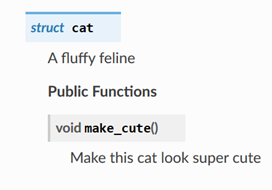
Writing good documentation is hard. Tools can’t solve this problem in themselves, but they can ease the pain.
This post will show you how to use Sphinx to generate attractive, functional documentation for C++ libraries, supplied with information from Doxygen. We’ll also integrate this process into a CMake build system so that we have a unified workflow.
For an example of a real-world project whose documentation is built like this, see fmtlib.
Excellent article, I used this to document MOTIS utl module - cf. PR 25
Recently we’ve heard a few people imply that problems stemming from undefined behaviors (UB) in C and C++ are largely solved due to ubiquitous availability of dynamic checking tools such as ASan, UBSan, MSan, and TSan. We are here to state the obvious — that, despite the many excellent advances in tooling over the last few years, UB-related problems are far from solved — and to look at the current situation in detail.
From: http://taint.org
A few months ago I saw a blog post touting fancy new SSE3 functions for implementing vector floor, ceil, and round functions. There was the inevitable proud proclaiming of impressive performance and correctness. However the ceil function gave the wrong answer for many numbers it was supposed to handle, including odd-ball numbers like ‘one’. The…
Two lightweight testing frameworks make it easy to unit test C code.